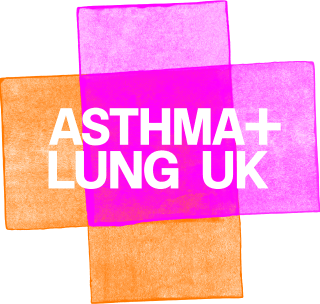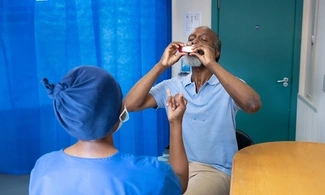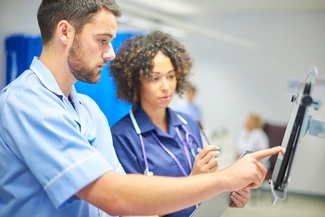What is lung volume reduction (LVR)?
Lung volume reduction (LVR) is a treatment for emphysema. Emphysema is a type of COPD (chronic obstructive pulmonary disease). LVR is a procedure that removes the most damaged parts of your lungs so that the healthier parts can work better. This should make it easier for you to breathe.
LVR may be done using:
- Lung volume reduction surgery (LVRS). A doctor will operate to remove the most damaged parts of your lung.
- Endobronchial valves (EBV), or bronchoscopic lung volume reduction (BLVR). A doctor will place valves into your airways to stop air from getting to the most damaged parts of your lung. This causes these parts to shrink and make more space for the healthier parts of your lung to work.
- Experimental treatments. Your specialist can talk about these options with you.
What are the benefits of LVR?
LVR can improve:
- how well your lungs work
- breathlessness
- your ability to do daily activities
- your quality of life
- your life expectancy.
Who can have lung volume reduction (LVR)?
Lung volume reduction (LVR) can be very effective, but only around 1 to 2 in 100 people with emphysema are likely to be suitable.
You have to have completed a course of pulmonary rehabilitation (PR) before you can have LVR. PR is an education and activity course designed to help people manage their breathlessness. Your PR team will be able to talk to you about LVR and whether you may be suitable.
If you’re still limited by breathlessness after a course of PR, your healthcare professional should consider whether you may be suitable for LVR.
Your healthcare professional will review whether LVR may be right for you if:
- You have severe emphysema.
- You are limited by breathlessness, meaning you get breathless after walking for a few minutes on flat ground.
- You have not smoked in at least four months.
- You have completed PR within the last 12 months or are taking part in a post-PR exercise programme.
- You are a healthy weight.
- Your lung function tests show that you are likely to benefit. This usually means that the amount of air you can blow out in one second is less than half of what it should be. The amount of air that stays trapped in your lungs when you breathe out also needs to be higher than normal for you to have LVR.
If these criteria apply to you, your healthcare professional should refer you to a multidisciplinary team (MDT) to be assessed. The MDT includes different lung specialists, including doctors, a surgeon and a specialist nurse.
Why would lung volume reduction (LVR) not be right for me?
LVR might not work for you if:
- you have other long-term conditions as well as emphysema, like pulmonary fibrosis, severe pulmonary hypertension, or heart failure
- your emphysema is evenly spread across your lungs (homogenous). This makes finding suitable parts of your lung to target harder.
If LVR is not right for you, your specialist can speak to you about other treatment options.
What tests will I need?
During your assessment, you’ll need to have tests to make sure lung volume reduction (LVR) is right for you.
At the end of the assessment, the MDT will decide:
- whether LVR is right for you
- if so, what type or types of LVR might be best for you.
The tests can include:
| A CT scan |
This will find out if your emphysema is evenly spread (homogeneous) or uneven and patchy (heterogeneous). If it is uneven, LVR is more likely to work because there are areas that can be removed or blocked off. A CT scan can also detect other problems like pulmonary fibrosis or bronchiectasis that might mean LVR is not possible. |
| A spirometry test | This measures how much air you can blow out in one second. |
| A gas transfer test | This measures how well oxygen passes from your lungs to your blood. |
| A lung volume test | This measures how much air is left in your lungs after you breathe out. |
| A walk test | This is a test that measures how far you can walk in 6 minutes to see if you are fit enough for LVR to be done safely. The oxygen levels in your blood are also monitored. |
| A lung ventilation perfusion scan (sometimes called a VQ scan) | During this scan, you will be injected with a special material that shows areas of your lungs that do not have much blood flowing through them. These areas don’t help your breathing, so they may be able to be removed. |
| An echocardiogram | This measures how well your heart is working. |
Lung volume reduction (LVR) surgery
LVR surgery is an operation which removes the most damaged parts of your lung. Your surgeon will use a special tool to cut your lung away and staple it shut at the same time. This will seal it and prevent or reduce any air leaks.
When the damaged parts of your lung are removed, the healthier parts of your lung can work better. This should make it easier for you to breathe.
LVR surgery is usually a keyhole surgery. This is a type of surgery that uses small cuts and a camera that is put inside your chest.
The procedure is done using general anaesthetic, so you are asleep when it happens. It takes around one to two hours.
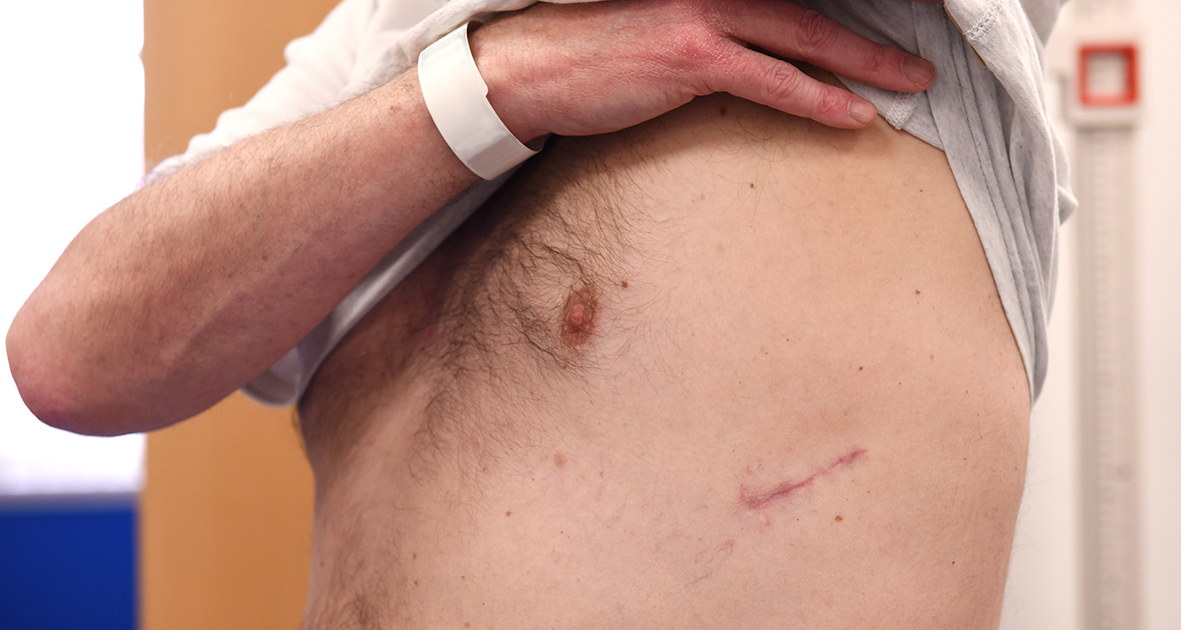
Recovery
How long you spend in hospital after your surgery varies from person to person, but it’s usually four to ten days. Keyhole surgery usually takes less time to recover from than other types of surgery where larger cuts are made.
You may experience some extra coughing, pain and breathlessness after the surgery. This can last for around one to three months, but most people find they can breathe more easily as their symptoms improve.
Sometimes, air can leak from your lung into your chest after LVR. This is called a pneumothorax. It normally happens in the first few days after your surgery, when you’re still in hospital. This means it can be treated easily. An air leak may heal by itself. If not, you will need to have a chest drain inserted until your lung recovers.
Your multidisciplinary team (MDT) should talk to you about the risks of LVR with you before your treatment.
Endobronchial valves (EBV)
Endobronchial valves (EBV) are another way to reduce lung volume. They are small, one-way valves placed in your lungs to block off the most damaged part of your lung.
The valves stop air getting to the most damaged area of the lung, so this area shrinks down to almost nothing. Like LVR surgery, this means the lungs do not inflate more than they should and makes room for healthier parts of the lung to move.
This procedure is sometimes called bronchoscopic lung volume reduction (BLVR).
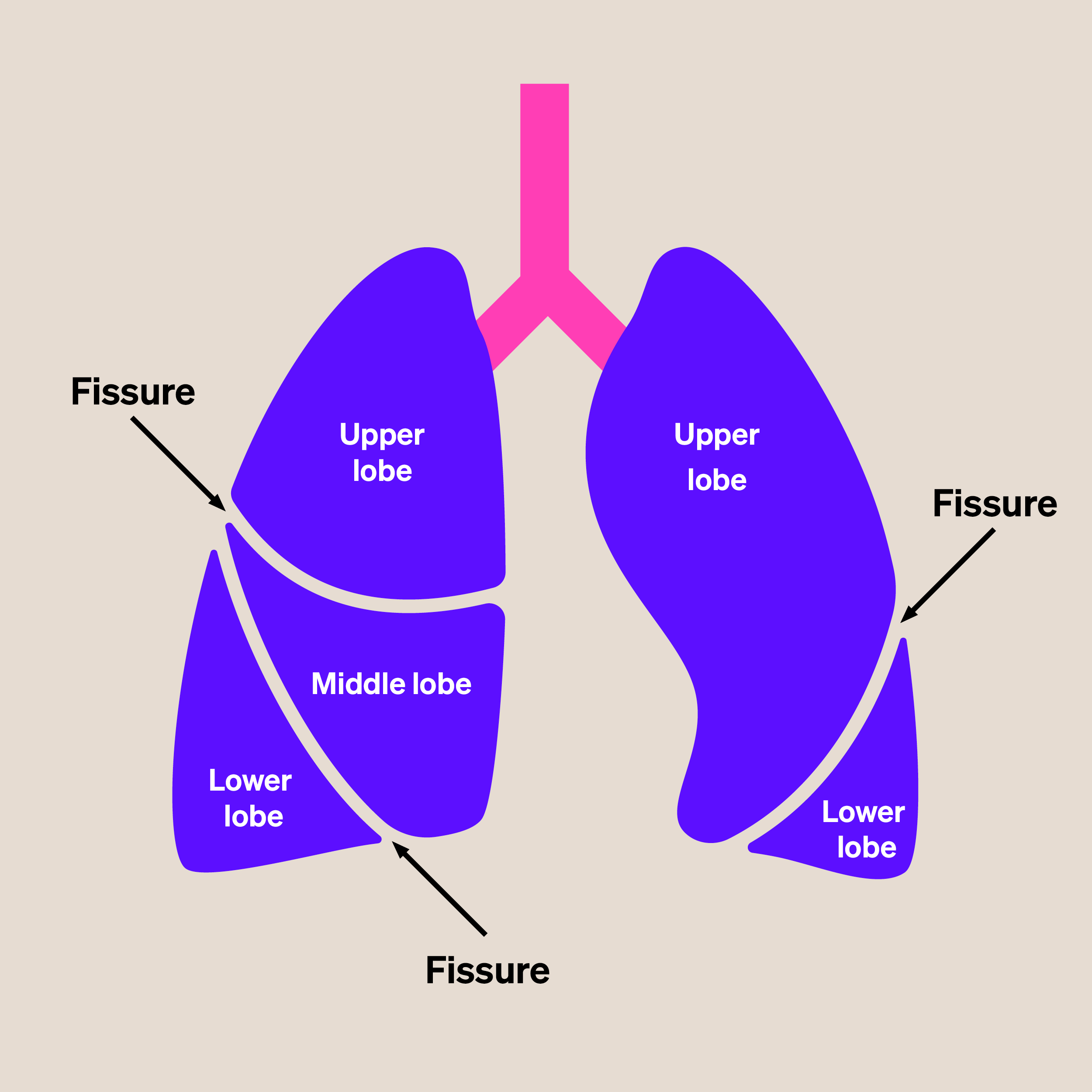
EBV only works if it is possible to treat a whole lobe of the lung. If your emphysema has broken down the division (fissure) between the lobes of your lung, then the procedure will not work. This is because even though the airways are blocked by the valves, air can still get into the target area of the lung another way. When this happens, it is called collateral ventilation.
EBVs are usually put in using a small flexible camera called a bronchoscope. Putting the valves in takes less than an hour.
The procedure is done under general anaesthetic so that you are asleep while it happens.
Recovery
If you feel well enough, you might be able to leave hospital the day after your surgery. It can take up to two days to feel recovered from the anaesthetic though.
Sometimes, air can leak from your lung into your chest after EBV. This is called a pneumothorax. An air leak may heal by itself. If not, you will need to have a chest drain inserted until your lung recovers.
Your multidisciplinary team (MDT) should talk to you about the risks of EBV with you before your treatment.
Are valves or surgery better?
The lung volume reduction treatment that you can have depends on the pattern of emphysema on your CT scan. Sometimes only valves or only surgery are possible. Sometimes either treatment might be effective for you. Your MDT will discuss with you which procedure is right for you.
Both surgery and valves can improve your lung function, ability to exercise, quality of life and life expectancy. Recent studies have shown that both procedures are equally safe and effective.
Experimental techniques
New, experimental techniques for LVR are being developed in clinical trials.
These include:
- using steam to make the areas of the lung that are not working properly scar over, so they shrink
- targeting the nerves in the lung to help relax the airway.
These techniques are being tested in specialist centres. They are currently only available to patients as part of clinical trials. If you are interested in them, talk to your GP or specialist.
Lung volume reduction webinars
Professor Nick Hopkinson, Asthma + Lung UK’s Medical Director, has produced two webinars to explain what lung volume reduction procedures involve:
- Watch the webinar for patients. This is an introduction to lung volume reduction. It is useful if you have emphysema or are currently doing pulmonary rehabilitation (PR).
- Watch the webinar for healthcare professionals. This is an introduction to lung volume reduction aimed at healthcare professionals. It is useful if you are a physiotherapist or a healthcare professional involved in PR. It can help you discuss lung volume reduction surgery or endobronchial valves with patients and increase your understanding of who to recommend for LVR.
